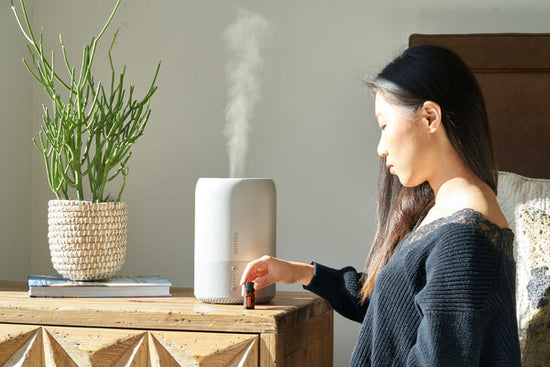Sleep apnea is a significant sleep disorder that causes people to stop breathing or take shallow breaths during sleep. On the other hand, snoring is a common condition that can affect people of all ages. It is often associated with sleep apnea but can also occur independently.
You may have sleep apnea if you snore loudly or feel tired even after a full night's sleep. Understanding this disorder and identifying its signs and symptoms can improve the quality of your life and, in some cases, prevent serious health complications.
Diagnosis of Snoring and Sleep Apnea
Diagnosing sleep apnea or snoring involves several steps. Initially, your doctor will review your medical history and perform a physical exam. They will ask about your sleep habits and might recommend you to a sleep specialist or a center specializing in sleep disorders. They could conduct a sleep study or use specialized tests to understand your condition better.
However, imaging is one of the most effective ways to diagnose snoring and sleep apnea. With the advancements in medical technology, different types of imaging tests can provide detailed images of your nose, throat, and airway, revealing potential causes of sleep apnea or snoring. (1)

Endoscopy: A Closer Look Inside
One diagnostic method is an endoscopic examination. This process involves using a tiny camera, known as an endoscope, to visualize the internal structures of your nose and throat. This test helps doctors determine if there are physical factors, such as enlarged tonsils or a deviated septum, that could be causing your sleep issues.
The endoscope can be inserted through the nose or the mouth, and as it travels down the throat, it sends back real-time video to a monitor. This way, doctors can directly observe any abnormalities or blockages that may be disrupting your sleep.
The procedure is typically performed in a doctor's office under local anesthesia and is generally painless. The results of an endoscopic exam can greatly assist your doctor in planning a targeted treatment approach. (2)
Harnessing the Power of MRI and CT Scans
Sometimes, an endoscopic examination might not provide enough information. In such cases, doctors might resort to more advanced imaging techniques like Magnetic Resonance Imaging (MRI) or Computed Tomography (CT) scans.
MRI uses magnetic fields and radio waves to generate images of the body. It is excellent for viewing soft tissues and can provide detailed images of the throat and nasal passages. This is especially beneficial when examining for sleep apnea as it allows doctors to see any soft tissue obstructions in the airway.
On the other hand, a CT scan uses X-rays to create cross-sectional images of the body. It is particularly good at imaging bones and can reveal if a bone structure in your face or neck might be causing your sleep apnea or snoring.
Although these procedures are more complex and might require you to visit a hospital or a specialized imaging center, they can provide invaluable insights into the cause of your sleep issues. (3)

Interpreting the Results and Planning Treatment
Once the imaging results are available, your doctor will interpret them. If abnormalities are seen in your airway, your doctor will discuss them with you and explain how they may be related to your snoring or sleep apnea.
Depending on the results, your doctor might recommend various treatment options. These could range from lifestyle changes, such as losing weight or quitting smoking, to medical devices like continuous positive airway pressure (CPAP) machines or, in some cases, surgery.
Remember, these imaging tests aim not just to diagnose your condition but to guide a treatment plan that will improve your sleep and overall health. Understanding your diagnosis can empower you to make informed decisions about your health care and lead to more restful nights. (4)
The Role of Sleep Studies
Apart from imaging, your doctor may also recommend a sleep study known as polysomnography as another tool to diagnose sleep apnea. This involves staying overnight at a sleep center, where specialists monitor your sleep stages and cycles. They check your heart rate, brain waves, breathing patterns, blood oxygen levels, and body movements.
Although the concept of a sleep study may seem intimidating, it's a straightforward procedure that provides comprehensive data about your sleep. This information and imaging results allow healthcare providers to establish a full picture of your sleep health and develop a targeted treatment plan. (4)
Personalizing the Treatment Approach
After all diagnostic procedures are completed, and the results are interpreted, the next step is to design a personalized treatment plan that suits your specific needs. The treatment plan may involve lifestyle changes, medication, or even surgery, depending on the severity of your condition and the specific factors contributing to it.
For instance, if weight gain is found to be a contributing factor, your doctor may suggest a weight loss regimen coupled with regular exercise. If a physical obstruction is causing the problem, a device like a CPAP machine might be recommended to keep your airway open during sleep. Alternatively, surgery may be considered a viable treatment option in more severe cases.
Adherence to Treatment
Regardless of the recommended treatment approach, adherence is critical. Continuous use of prescribed devices, regular practice of lifestyle changes, and completion of any medication courses are necessary for treatment to be successful. In many instances, addressing sleep apnea and snoring can significantly improve individuals' quality of life, health, and well-being.
Educating the Patient and Family
Educating patients and their families about the disorder is a crucial part of the process. Understanding the need for diagnostic procedures, the value of treatment, and the risks of untreated sleep apnea is important. This knowledge aids in reducing apprehension, improving adherence to treatment, and fostering a supportive environment.
The Role of Regular Follow-up
Finally, regular follow-ups with your healthcare provider are a critical aspect of managing sleep apnea and snoring. These appointments are opportunities to monitor progress and make necessary adjustments to the treatment plan. Regular follow-ups ensure the treatment is working and any new problems are identified and addressed promptly.
Conclusion
In conclusion, it's essential to understand that diagnosing and treating sleep disorders like snoring and sleep apnea is a comprehensive process. It involves a series of steps, starting from initial examination and possibly involving imaging studies, all aimed at identifying the exact cause of your sleep problems. Once diagnosed, a personalized treatment plan is created and followed, with regular check-ups to monitor progress. This comprehensive approach can greatly enhance the quality of life for those suffering from these common but potentially debilitating sleep disorders.
FAQ
What is the best diagnostic test for sleep apnea?
The best diagnostic test for sleep apnea is polysomnography (PSG), also known as a sleep study. PSG is considered the gold standard for diagnosing sleep apnea because it provides comprehensive and objective information about an individual's sleep patterns, breathing, and other physiological parameters during sleep.
Can sleep apnea be diagnosed without a sleep study?
It's essential to consult with a healthcare professional or sleep specialist to discuss your symptoms, risk factors, and the most appropriate diagnostic approach based on your individual circumstances.
How accurate are sleep studies for sleep apnea?
Sleep studies, particularly polysomnography (PSG), are highly accurate for diagnosing sleep apnea. PSG is considered the gold standard and provides comprehensive and objective data about an individual's sleep patterns, breathing, and physiological parameters during sleep.
Should I see a pulmonologist for snoring?
The following are professionals more qualified to diagnose and treat snoring: a primary care physician (PCP), ear, nose, and throat (ENT) specialist, sleep medicine specialist, or a dentist.
References
(1) https://www.ncbi.nlm.nih.gov/pmc/articles/PMC3411139/
(2) https://www.ncbi.nlm.nih.gov/pmc/articles/PMC4042609/
(3) https://www.ncbi.nlm.nih.gov/books/NBK232483/
(4) https://www.ncbi.nlm.nih.gov/pmc/articles/PMC4549693/





